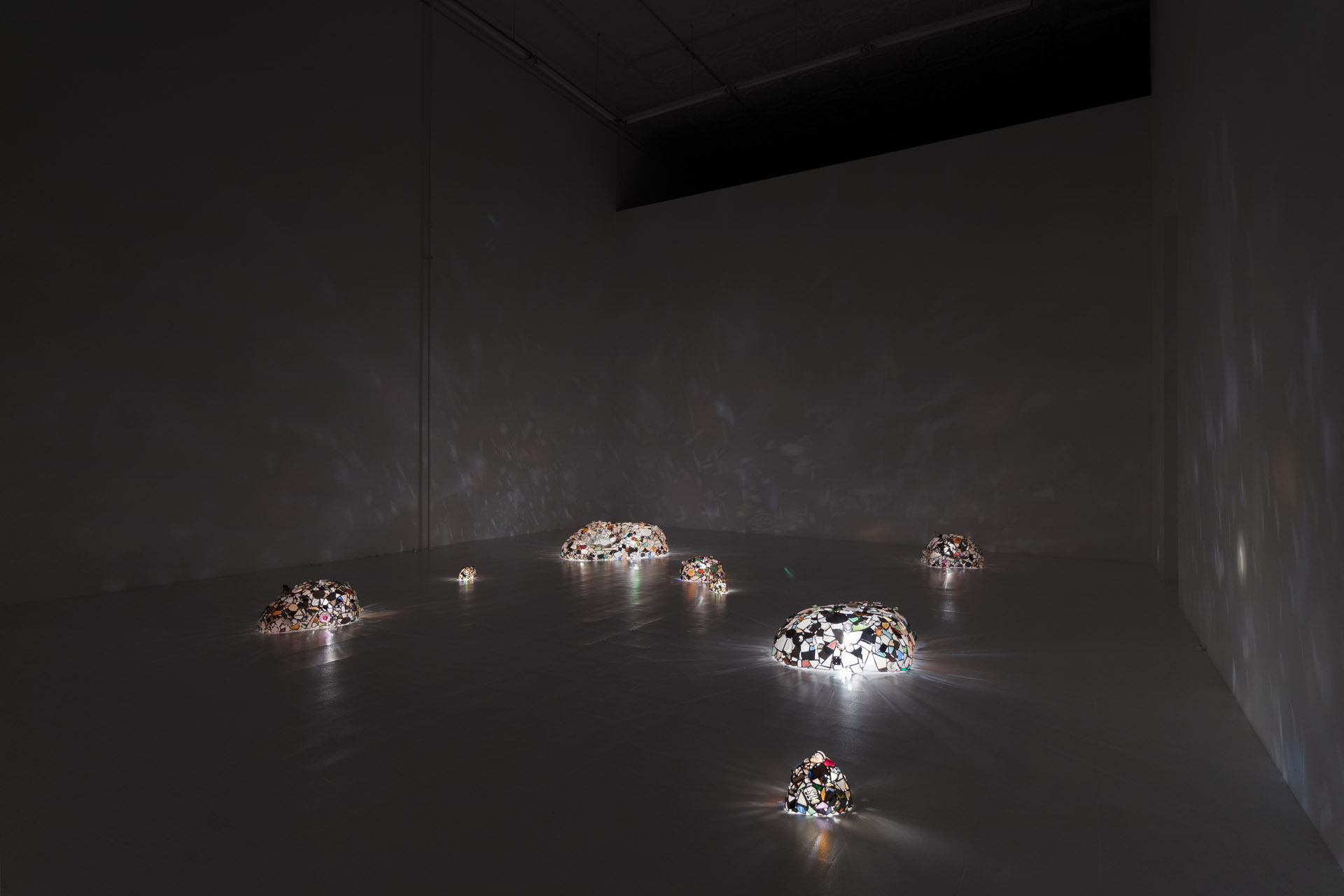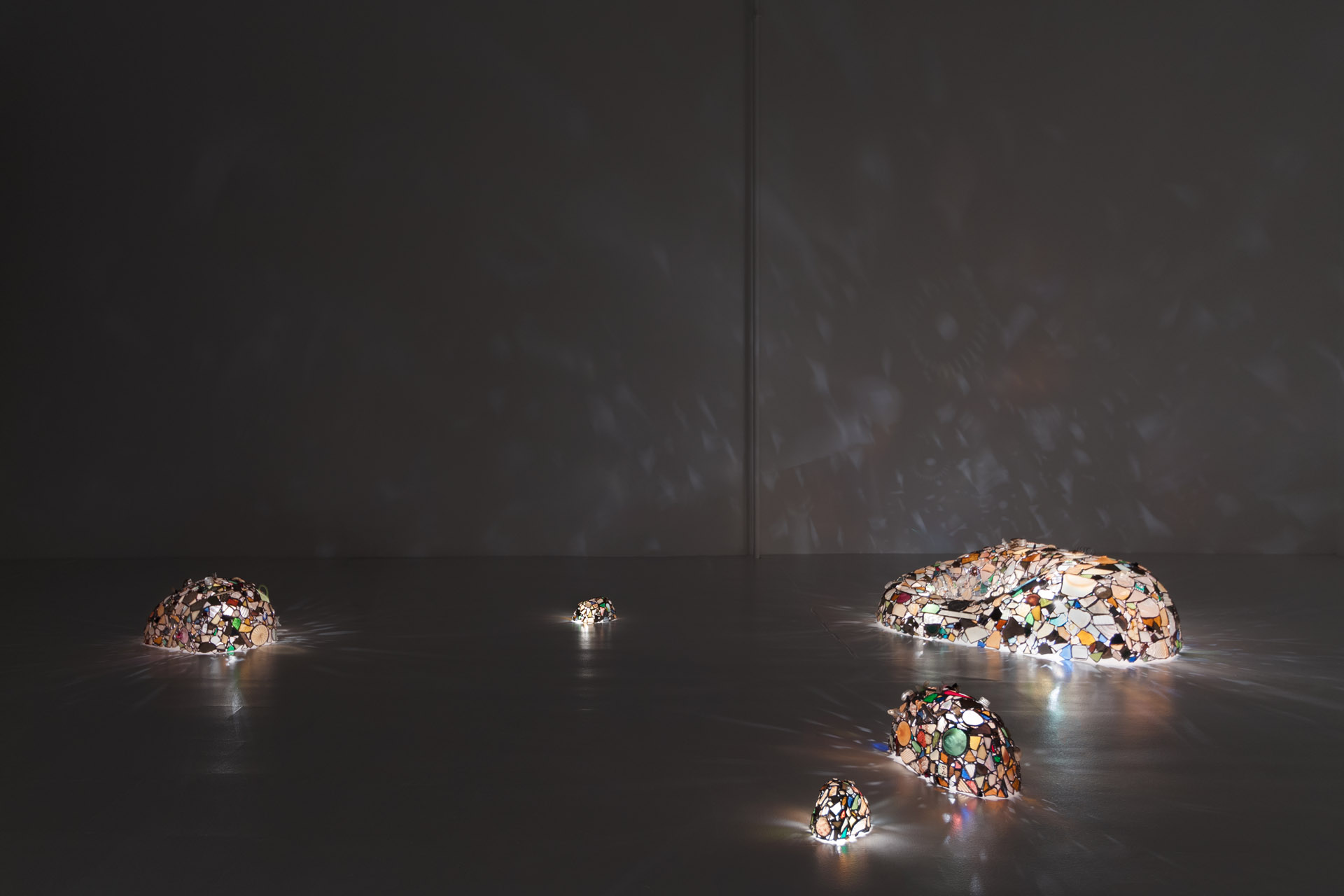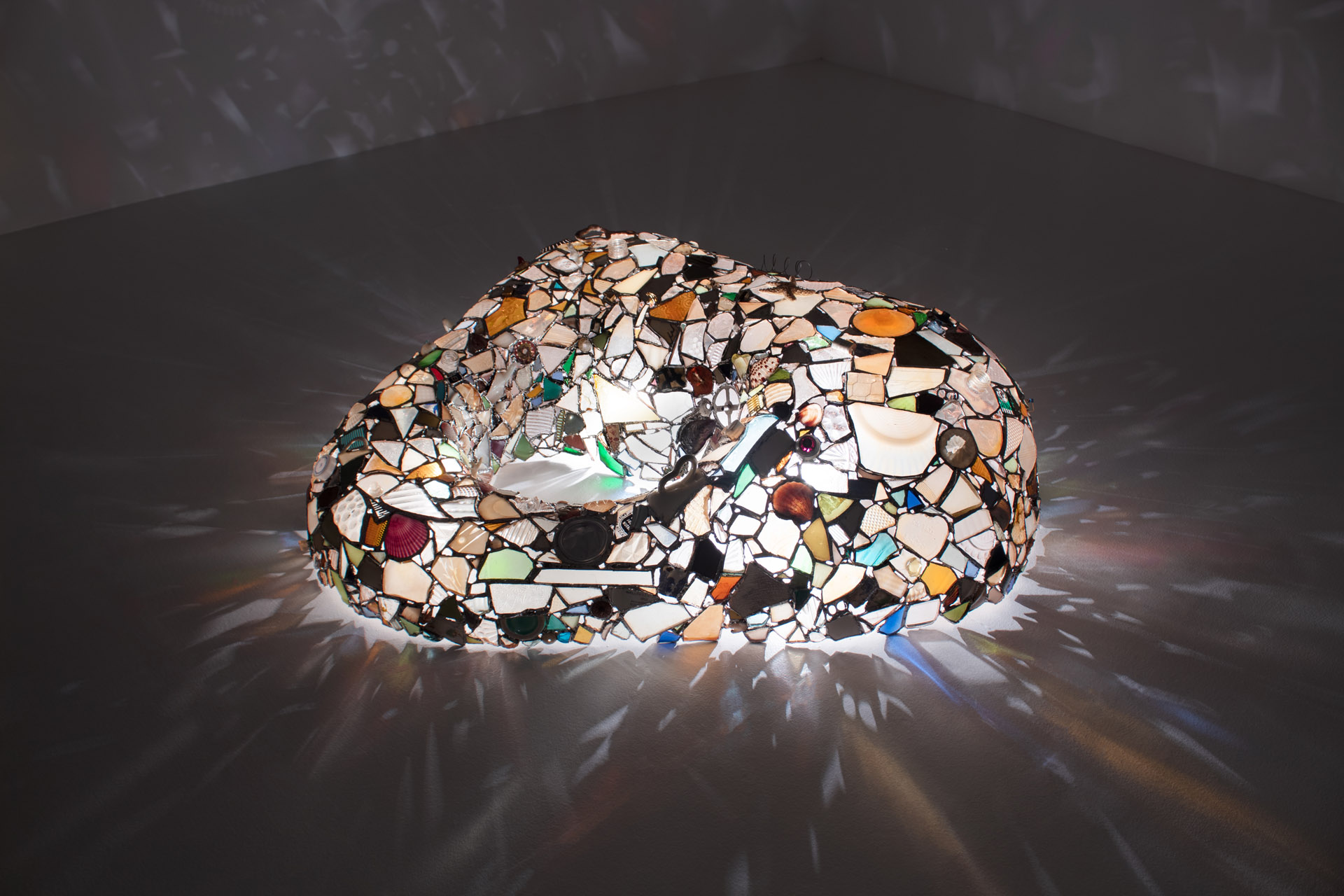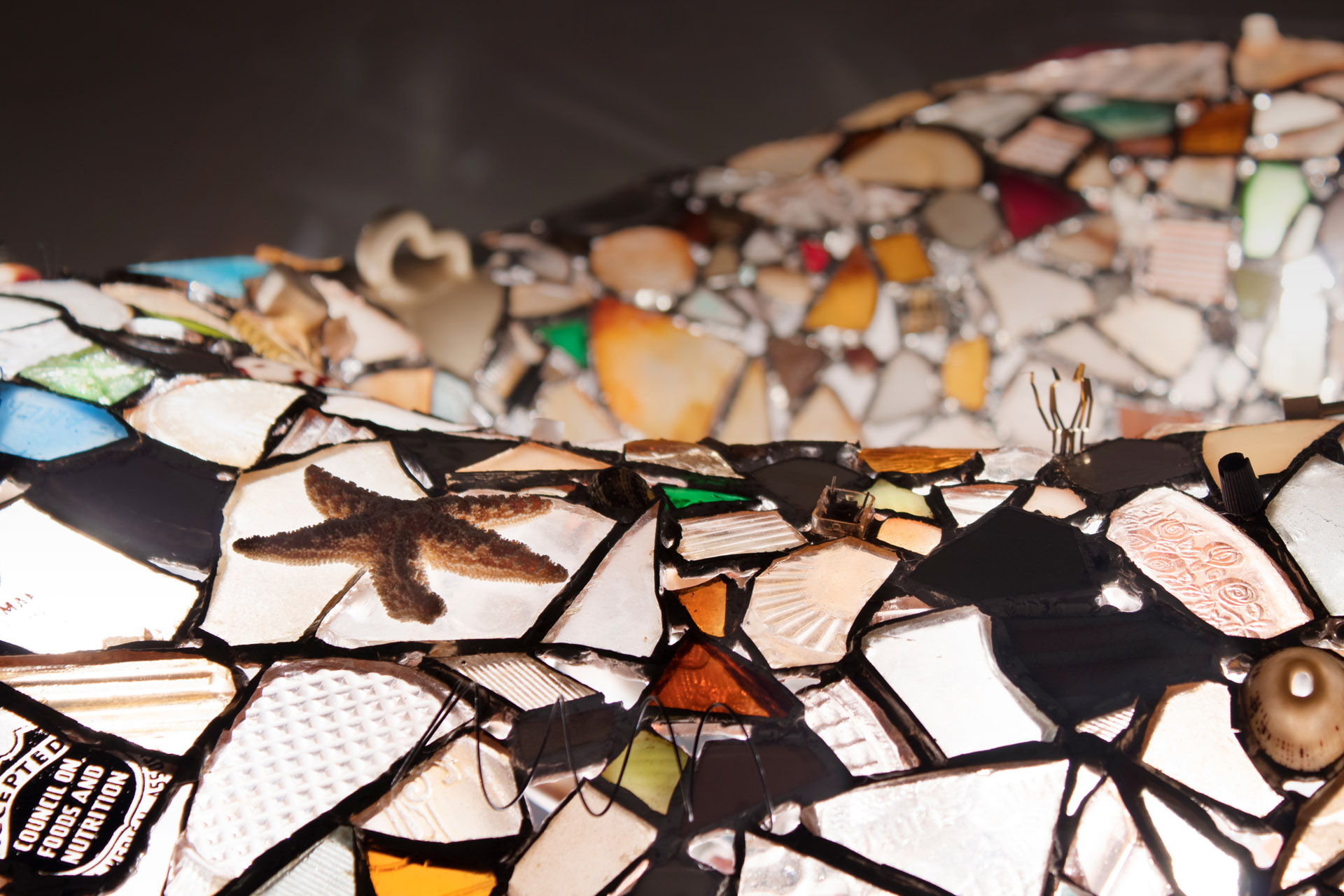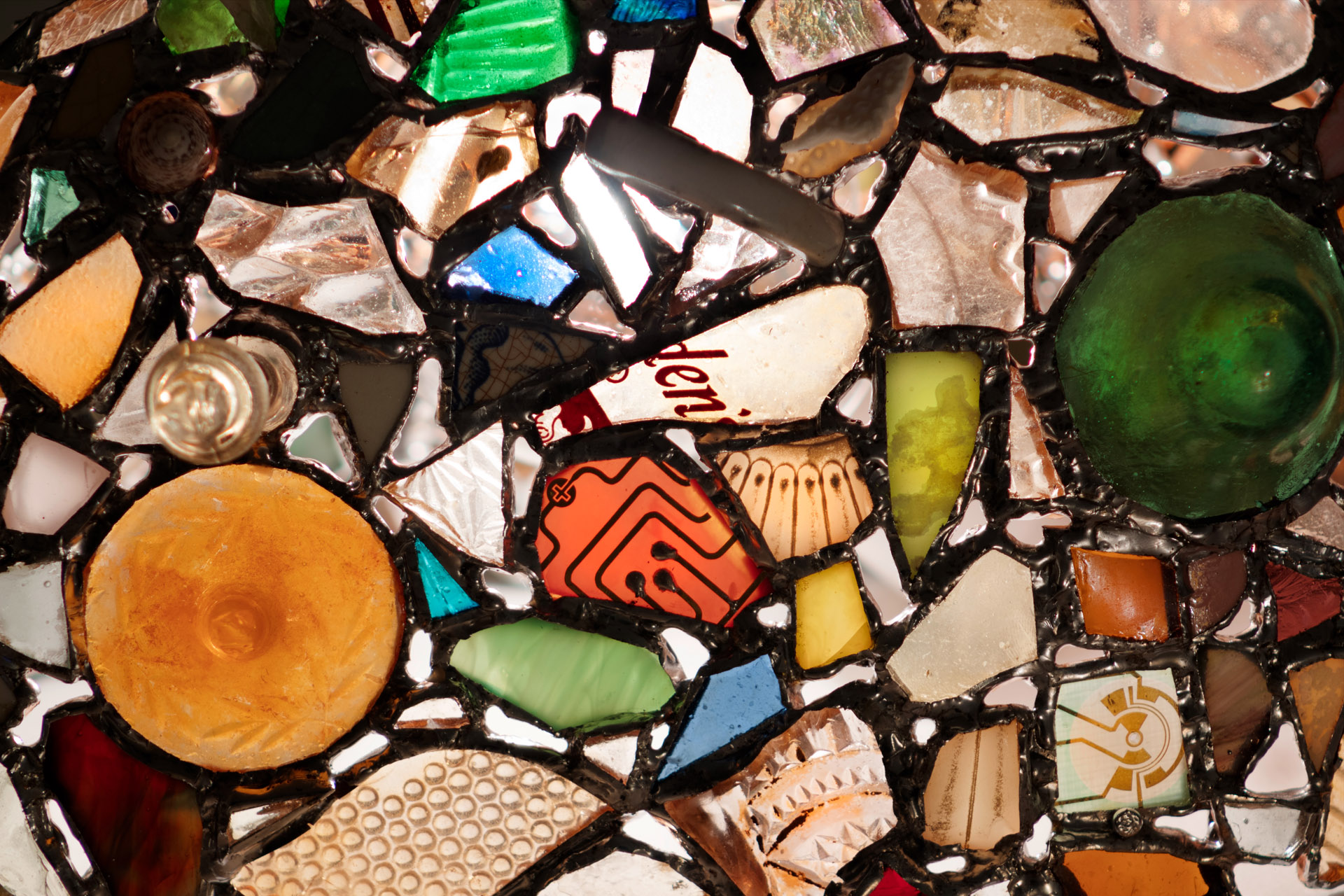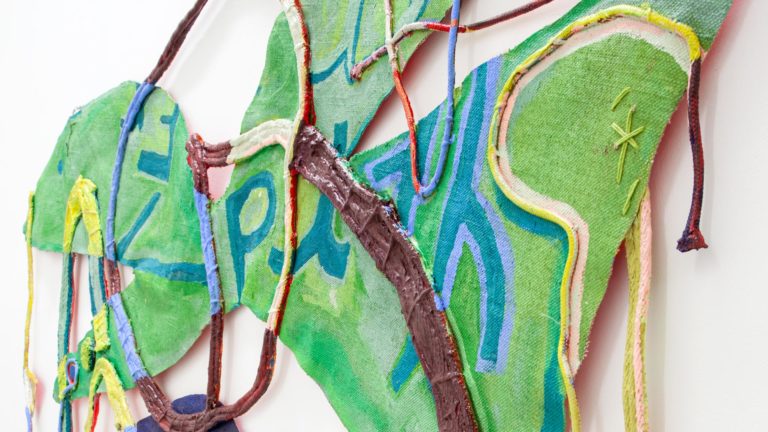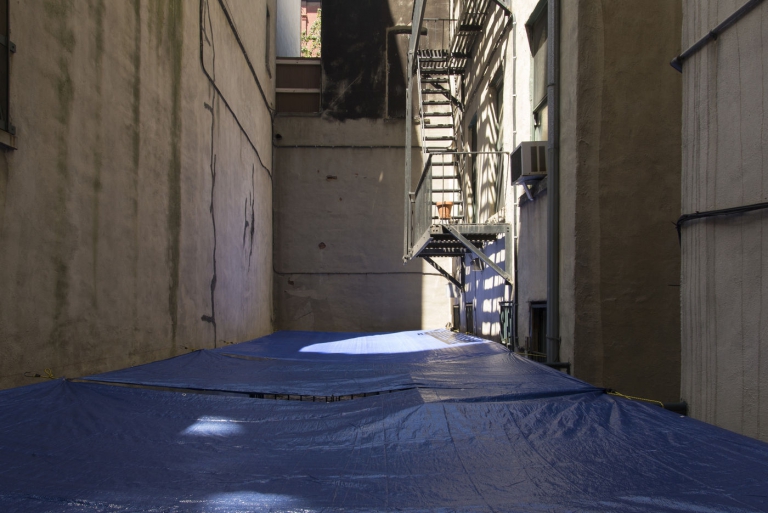Artist: Bea Fremderman
Exhibition title: Barren Island
Venue: Prairie, Chicago, US
Date: September 4 – October 17, 2021
Photography: All images copyright and courtesy of the artist and Prairie, Chicago
Time is a necessity. Time is not necessarily constant. Oxygen and silicon are the most abundant chemicals in the Earth’s crust. Both elements derive out of fusion caused by gravitational collapse in the nucleosynthesis of red giant stars. Quartz and other minerals form when felsic magma solidifies into igneous rocks. As magma cools, mineral fragments weave themselves into an interlocking mosaic. From heat and sand modern industrial glass manufacturers produce a glass bottle in approximately 10 seconds. It is estimated that a glass bottle takes one million years to naturally decompose. In the beginning there was no time. If all life is time, then time is the only living thing.
Beginning in the early 17th century, Dutch and English colonists began wresting possession of New York’s harbors from their indigenous inhabitants. Among these territories was an archipelago on Brooklyn’s southern shore referred to by the local Canarsee natives as Equandito, or “Broken Lands.” Having been mostly vacant and unoccupied for more than a century, the island slowly began to accumulate residents. Settlers called the site Barren Island, a corruption of the Dutch Beeren Eylandt meaning “Bear’s Island.” From 1860 to 1934 the area was developed into an industrial complex, receiving the nickname Dead Horse Bay after its facilities dedicated to the rendering of animal carcasses. The island was also home to an extensive garbage dump and incinerator. A residential community developed around the processing plants, mostly comprised of African-American laborers and Eastern European immigrants. The workers were ranked in a localized caste system based on the types of items they scavenged; bone sorters predominated metal and paper collectors who outranked rag pickers etc. By 1936 New York City parks commissioner Robert Moses had ordered the eviction of all the residents of Barren Island. The land was reappropriated for use by the United States Navy by burning all structures on the island and covering the waste deposit with a layer of topsoil, turning the island into a peninsula.
On the beach today, history has sprung a leak. The rising tide has punctured humanity’s impersonation of godhood and a wound of consumption spills into its waters. Between the susurrations of the waves hangs an endless chime, the skims and tide pools wrapped in an iridescent film of archaic petrochemicals. Sightseers and beachcombers come seeking relics of the past or a glimpse into the future, the shards crushing beneath their feet. Among them Bea Fremderman fills her bags with Depression glass, from sand to sand. She reassembles these fragments of time into erratic apertures as their forms dictate and casts a light from within. The luminous archipelagos show us their vast aqueous chronicle. Time expands and contracts. The snake swallows its tail.
Written by Kyle Clements


